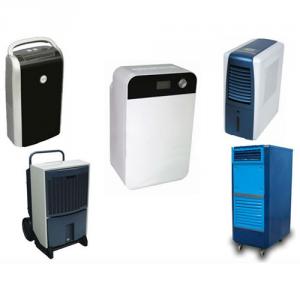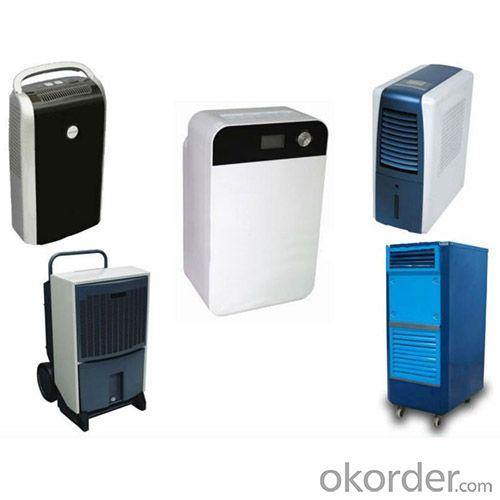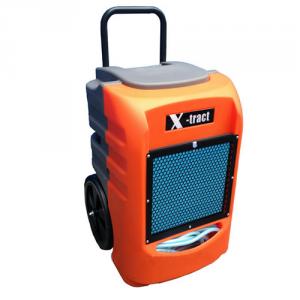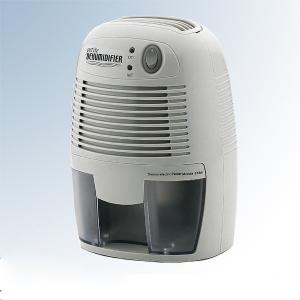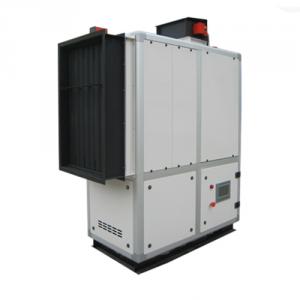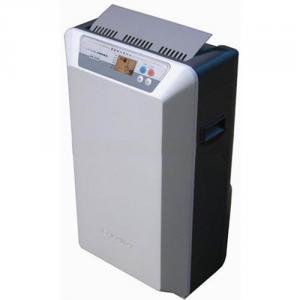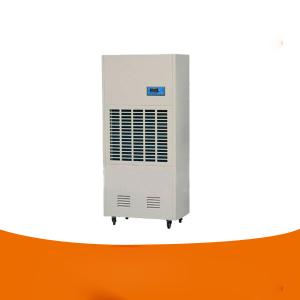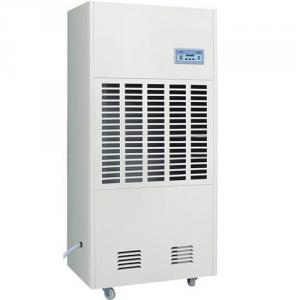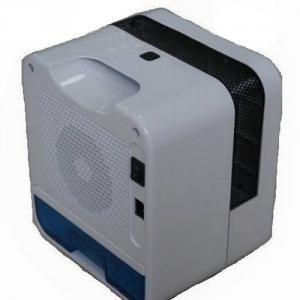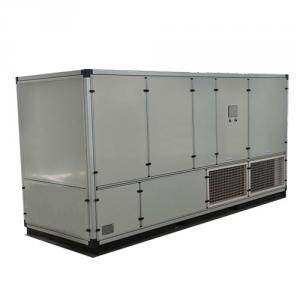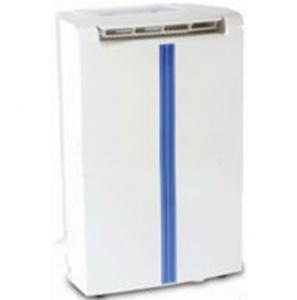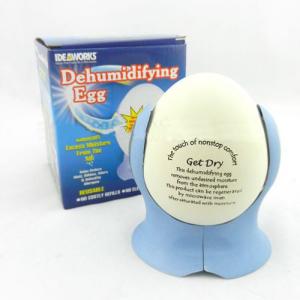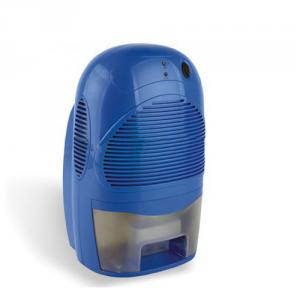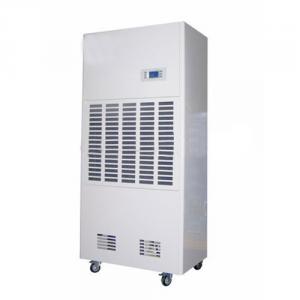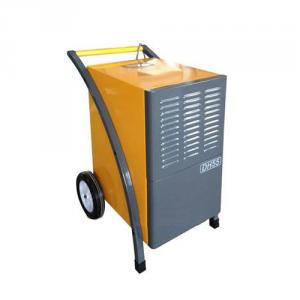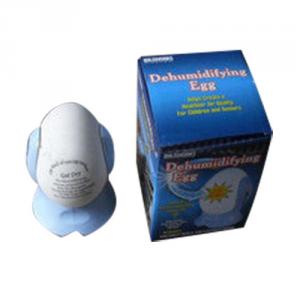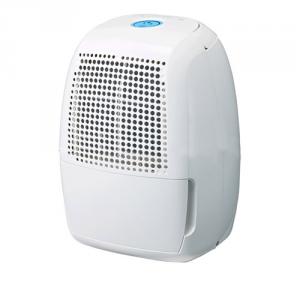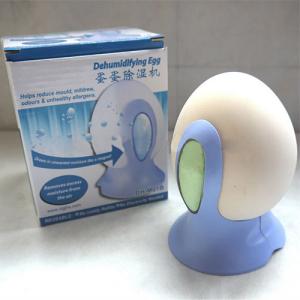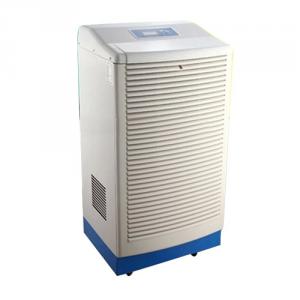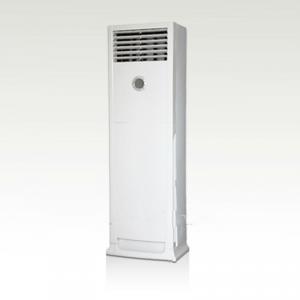Industrical Dehumidifier Provider
- Loading Port:
- Nhavashiva
- Payment Terms:
- L/C
- Min Order Qty:
- 1 Piece pc
- Supply Capability:
- 1000 Pieces per Month pc/month
OKorder Service Pledge
OKorder Financial Service
You Might Also Like
Product Description
A dehumidifier is a household or an industrial appliance that reduces the level of humidity in the air, usually for health reasons of man, machine & equipments. Humid air can cause mold and mildew to grow inside homes, which has various health risks. Very high humidity levels are also unpleasant for human beings, can damage house holds good and can aggravate many health problems like Asthma, Dust Allergy, Arthritis, Sinusitis, Fever, Lung Infection, Pneumonia & various infectious etc.
Q. What is a Dehumidifier?
A. A dehumidifier is a household or an industrial appliance that reduces the level of humidity in the air, usually for health reasons of man, machine & equipments. Humid air can cause mold and mildew to grow inside homes, which has various health risks. Very high humidity levels are also unpleasant for human beings, can cause condensation and can make it hard to dry laundry or sleep.
Higher humidity is also preferred by most insects, including clothes moths, fleas and cockroaches. Relative humidity in dwellings is around 50%. Dehumidifiers are also used in industrial climatic chambers for keeping desired humidity levels.
Q. What is Dehumidification?
A. Dehumidification is the process of removing excess moisture from the air in your room or covered area and is primarily accomplished through the use of a dehumidifier. Dehumidifiers work by combining three basic principles: cooling the air, adsorption, and absorption.
By using coolant, dehumidifiers cool the air below the dew point which causes the moisture in the air to condense. The water is captured in a drain bucket. This same principle is also true for commercial/industrial dehumidifiers. Our dehumidifiers come equipped with larger fan motors, drain buckets, or internal condensate pumps to condense, collect and drain water away.
Condensation in electric items may cause irreparable damage, and can even be dangerous. Musty smells can develop, and eventually mold, mildew and fungus will appear. These can be damaging to your health. The recommended indoor humidity level is around 50%. Dehumidifiers can help to keep your home within those levels, but there are many different types available, and lots of features to choose from. Exploring the pages of this site will help you to decide what the best dehumidifier is for your situation.
Q. Where does indoor moisture in the air come from?
A. Most of our everyday activities contribute to increased humidity in the home. Showering can add a 1/2 pint of water into the air. Simply preparing meals adds approximately 5 pints of water to indoor air for a family of four over course of a day. Washing your laundry, mopping, using the dishwasher and even indoor plants contribute moisture to indoor air.
Our most basic activity of breathing can add 1/2 a pint of moisture to the air over four hours. In a home of 1000 square feet with constant temperature, four to six pints of water can increase relative humidity from 15% to as much as 60%. As you can see, the most basic activities have a growing impact on indoor humidity levels. In a relatively short period of time, elevated humidity levels create a suitable environment for mold and dust mites to flourish.
Q. What is relative humidity?
A. Relative humidity is a percentage showing how much water vapor is currently trapped in the air relative to the maximum amount of water vapor the air can hold at a given temperature. Your relative humidity level is the ratio of the current amount of water vapor in the air relative to the maximum amount of water vapor it will hold at a given temperature.
Q. How do I know what size is right for me?
A. There really is no easy answer to this question, and deciding which model and size is right for you will depend on several factors. You need to ask yourself several questions before purchasing.
• How severe is my moisture problem?
• How large is the room/location where the dehumidifier will be used?
• Under what conditions will my dehumidifier typically operate?
• Is energy consumption a primary concern?
• Will I port the unit or empty the drain bucket?
• Number of Persons
• What are the activities inside.
Q. Where Should I Place A Dehumidifier?
A. Place a dehumidifier so it has free air flow in a room, a few feet from a wall. Dehumidifiers work by taking humidity out of the air, but also by heating the air as it runs through its condenser when discharged from the unit.
Q. How do dehumidifiers work?
A. Dehumidifiers work by forcing condensation on cold surfaces. Humid air is drawn over cooled fins that makes moisture condense on the large cool surface. The condensation is allowed to drain from the fins into a collection tank, or is piped to a suitable drain. The fins are kept cool in the same way a fridge or an air conditioner keeps cool. In many respects a dehumidifier is similar to an air conditioner, with similar components (fan, condenser, cooling fins, refrigerant and pump) Mechanical dehumidifiers should not be confused with hydroscopic granules or crystals which are attract moisture from the air to the material.
Q. What factors affect their performance?
A. The performance of any one dehumidifier is mainly dependant on the ambient humidity and temperature. Condensation on the cooling surface is enhanced when there is a greater temperature inversion on the surface (i.e. greater difference between the temperature of the air and that of the surface) The greater the ambient temperature, the more water they extract, and the higher the relative humidity then the more water that the unit will extract.
The performance is also affected by dust. All dehumidifiers will have some form of dust filter to protect the coils, however these only protect them for a period of time and they do need to be maintained. Disposable filters require changing and washable types require occasional cleaning. Some dust will penetrate the filter stage and accumulate on the condensation fins, which will have the effect of slightly reducing the performance. Performance can also be affected by the filter blocking therefore preventing enough humid air flow into the unit.
Packaging & Shipping
Packing & Shiiping as per customer's need or as per quotation/purchase order terms.
Our Services
We are an ISO 9001: 2008 certified companies that have been acknowledged with prestigious awards for innovative and quality range of products. We work round the clock with utmost dedication and try to bring in new and innovative products.
FAQ
If any query about our products and our company please feel free to contact us. Our contact details are given below.
Q 1.Okorder Quality Control?
We hold a very strict quality control system to check every connector of our products for
your safety.
Q 2: How do you care for your kitchen appliances?
A: Keep good Ventilation indoor. Open the doors of the kitchen appliances, if not. There
will be some mildew on cutting board and other kitchenware, because the water vapor can not
evaporate easily.
Keep clean of all the appliances. Each kitchen has its special cleaning fluid,please go to
Kitchen cleaning stores buy some clean them on time.
Q 3: Which one do you use the most of kitchen appliances?
A: Assuming you mean small appliances .I say too many! At one time we would buy every one
that came along; including a hot dog machine, pizza maker, elec. carving knife, elec.,
toaster oven,. Most have been garaged sale (sold) or are stored in the garage. Most used;
coffee maker, microwave, blender and mini food processor. OK?
- Q: What is the principle of a spray dehumidifier?
- When the temperature of the wet gas drops below the dew point, the steam condenses and reduces the humidity of the gas
- Q: What shall I do if the heating indicator of the air dryer is not extinguished?
- Check to see if the temperature sensor is damaged or malfunction fails
- Q: When the automobile air conditioner is used, why is the dryer hot?
- Dryers are very important parts of air conditioning, although they are often neglected
- Q: What are the common types of fluidized bed dryers?
- The fluidized bed is dried in accordance with the dry material and is suitable for granular material
- Q: What are the factors that affect drying effect of dryer?
- Heat is the key to the synergy between boiling water molecules and hygroscopic polymers. When higher than a certain temperature, the attraction between water molecules and polymer chains will drop greatly, and water vapor will be taken away by dry air
- Q: What are the characteristics of a Dielectric dryer?
- Because the material water within high specific surface, so the material inside more energy than the surface temperature, temperature of material, so that the temperature gradient and moisture diffusion in the same direction, can accelerate the vaporization of water, shorten the drying time
- Q: How to install the car air dryer?
- Installation: vertical, sewage (gas) mouth down, the slope shall not exceed the requirements of product specifications
- Q: How do I choose the dryer?
- Finally, according to the equipment price and small test situation, decide what kind of dryer to use
- Q: What is the mean of dryer?
- A dryer is a mechanical device that vaporizes by heating the moisture in the material (usually water or other volatile liquid components) to escape the solid content of the specified moisture content.
- Q: What are the clogging problems in dryer?
- After the compressor starts running for a period of time, the condenser is not hot, no air cooling is blown out, hand touching the dry filter, chills, condensation or frosting, and the compressor sends out a muffled and overloaded sound
Send your message to us
Industrical Dehumidifier Provider
- Loading Port:
- Nhavashiva
- Payment Terms:
- L/C
- Min Order Qty:
- 1 Piece pc
- Supply Capability:
- 1000 Pieces per Month pc/month
OKorder Service Pledge
OKorder Financial Service
Similar products
Hot products
Hot Searches
Related keywords
